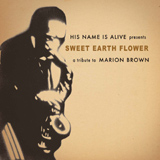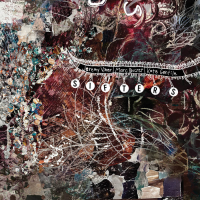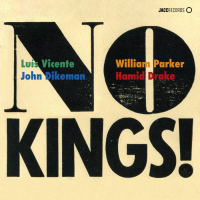Home » Jazz Articles » Multiple Reviews » Anthony Braxton: 4 Compositions (Ulrichsberg) 2005: Phon...
Anthony Braxton: 4 Compositions (Ulrichsberg) 2005: Phonomanie VIII; Trio (Glasgow) 2005; Sextet (Victoriaville) 2005; ABCD & Solo (Pisa) 1982
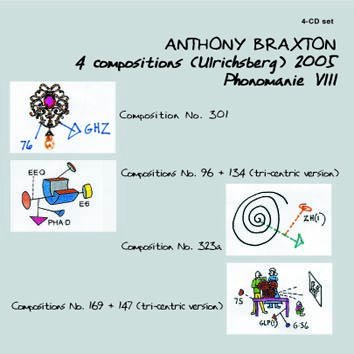 | 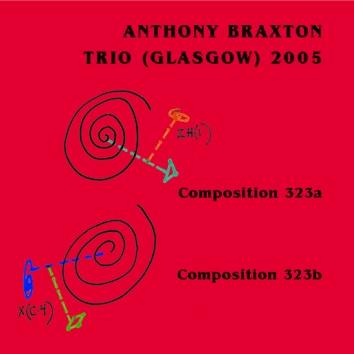 | 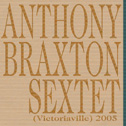 |  | 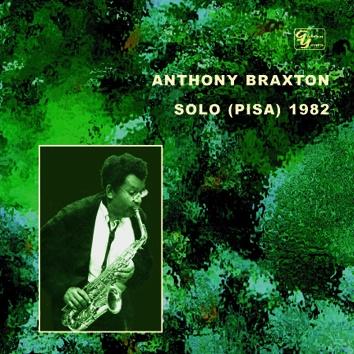 |
Anthony Braxton 4 Compositions (Ulrichsberg) 2005: Phonomanie VIII Leo 2007 | Anthony Braxton Trio (Glasgow) 2005 Leo 2007 | Anthony Braxton Sextet (Victoriaville) 2005 Victo 2007 | Anthony Braxton ABCD Not Two 2006 | Anthony Braxton Solo (Pisa) 1982 Leo 2007 |
Anthony Braxton's music can be dauntingly complex, foreboding in its academic systems and hieroglyphic titling. Which is a shame, because it needn't be. As with any music, the first inroad is whether or not it speaks (or sings) to the listener. If not for that entry point, the professor runs the risk of, to borrow from Mark Twain's comments on Wagner, writing music that's better than it sounds.
But faced with such a large and unabashedly intellectual catalogue, it's fortunate that there have been some interpreters along the way. Graham Lock's book Forces in Motion: The Music and Thoughts of Anthony Braxton, though nearly 20 years old, is indispensable, and certainly liner notes along the way—especially by Toronto journalist Stuart Broomer—have proven enormously helpful. Toward that end, the four-disc set 4 Compositions (Ulrichsberg) 2005: Phonomanie VIII is vital toward understanding Braxton's developments over the last decade, and no doubt for years to come.
To detail the new approaches here would just amount to paraphrasing the notes penned by Braxton and Broomer, and would run the risk of distracting from the real issue at hand: whether the music on this latest spate of Braxton releases is at least as good as it sounds. Suffice to say that at the concerts documented on Ulrichsberg and in the notes contained therein, some new cognitive approaches to the master's music are introduced. For those following at home, this is the period following (but no doubt incorporating some of the tenets of) Braxton's Ghost Trance and Accelerated Ghost Trance musics. The two new areas of exploration introduced here are Diamond Curtain Wall and Falling River. The savvy consumer will refer to the liners, perhaps standing in a used CD shop perusing the booklet, to absorb the treatise. But in criminally short: Diamond Curtain Wall marks Braxton's first use of electronics, and Falling River is a system of graphic notation.
Braxton turned 60 on June 4, 2005, and celebrated the event with a series of well-documented concerts. The concerts in Ulrichsberg, Austria, included performances of Composition 301 for solo piano, played by Genevieve Foccroulle; Composition 323a for a Diamond Curtain Wall trio, and Compositions 96 + 134 and 169 + 147 by the 15-piece Ulrichsberg Tri-Centric Ensemble. The solo piano set is beautiful, reinforcing by nature of the instrument and by Braxton's absence on the recording how distinctive his language is. The trio is sparse and engaging, with the feel of a highly sympathetic group improvisation. But the two discs" worth of orchestral pieces are the real gems here. With five reeds, three horns, five strings, electric guitar, piano and electronics, the recordings incorporate much of Braxton's compositional ideals: the Tri-Centric arrangement (three conductors—Braxton, Taylor Ho Bynum and Aaron Sigel—each leading a part of the ensemble); the interpolation of different compositions which has been a part of Braxton's music since his notable 1980s quartet; and the relatively new incorporation of electronics. It's a very different group than his recent 12+1tet (whose week at New York's Iridium was documented on Firehouse 12's impressive box set earlier this year). Where the 12+1tet excels at interplay within the pieces, the Ulrichsberg group is more formal, beautifully realizing the complex, but good-sounding, scores.
The Diamond Curtain Wall music gets treated to another 117 minutes of recorded time on Trio (Glasgow) 2005. The same trio as in the Ulrichsberg concert (Braxton on reeds and electronics, Ho Bynum on cornet, flugelhorn and trombone and Tom Crean in the guitar chair that has since been filled by Mary Halvorson) was recorded four days later in Scotland—Leo has been more than generous in its documenting of Braxton's work. Here they repeat Composition 323a and follow it with 323b, and with the added electronics almost come off like a quartet: a pair of horns dancing over the guitar and SuperCollider software. Crean's jagged playing in particular sounds great throughout.
Braxton's appearance at the 2005 Festival International de Musique Actuelle de Victoriaville was another celebration. In addition to a duet with guitarist Fred Frith and an unscheduled appearance with the noise group Wolf Eyes, Braxton presented his sextet playing Composition 345. With the exception of bassist Chris Dahlgren, the group overlaps with the 12+1tet, and show the same sense of interplay and deep understanding of the material. Occurring about a month before the Germany and Scotland concerts, the sextet performance is more dynamic than the other groups as well, beginning the concert with what feels like a straight reading of the material and builds into a lovely frenzy. Comprised of musicians who know Braxton's music well, the sextet understands well the freedom within Braxton's compositions and take full advantage of it.
Dahlgren and Braxton met for a set of duos in 2003, playing four versions of Composition 316 (with Falling River Musics) interspersed with four versions of Dahlgren's Penumbra for woodwind(s) & bass(es). It's a bright, warmly recorded session, and to Dahlgren's credit how well his pieces work against Braxton's.
In the greater jazz world, musicians working with large conceptual structures often see their ideas eclipsing their instrumental skills. Braxton's saxophone playing is never short of phenomenal on the eight hours described above, but stripped of bandmates there's no way to miss his talent on the instrument. Braxton famously (now if not at the time) recorded the first solo saxophone album, and more than a decade later was routinely playing solo concerts. Leo has released sets from 1978 and 1979, and now has dug up a 1982 concert from Pisa. Eight of Braxton's compositions are presented alongside the standards "Alone Together," "Round 'Bout Midnight," "You Go to My Head" and concluding with "Giant Steps," a piece composed by John Coltrane with the intention of being a challenge on the saxophone. If it's easier to hear him as an accomplished player here, so be it. As always, he plays the hell out of it.
Tracks and Personnel
4 Compositions (Ulrichsberg) 2005: Phonomanie VIII
Tracks: Composition No.301 For Solo Piano—Genevieve Foccroulle; Compositions No.96 + 134 (Tri-Centric Version); Composition No.323a; Compositions No.169 + 147 (Tri-Centric Version).
Personnel: Anthony Braxton: reeds; Taylor Ho Bynum: Trumpet; Burkhard Stangl: Electric Guitar; Aaron Siegel: Percussion; Boris Hauf: Baritone Sax; Hannes Enzlberger: Bass; Judith Lehner: Clarinet; Benjamin Weidekamp: Alto Sax, Clarinet
Trio (Glasgow) 2005
Tracks: Composition 323a; Composition 323b.
Personnel: Anthony Braxton: reeds: Taylor Ho Bynum: trumpet; Tom Crean: guitar.
Sextet (Victoriaville) 2005
Tracks: Composition No 345.
Personnel: Anthony Braxton: reeds; Taylor Ho Bynum: trumpet; Jay Rozen: tuba, electronics; Jessica Pavone: violin; Chris Dahlgren: bass; Aaron Siegel: percussion, vibraphone.
ABCD
Tracks: No.316—version a (with Falling River musics); Penumbra for woodwind(s) & bass(es) 4+2; No.316—version b (with Falling River musics); Penumbra for woodwind(s) & bass(es) 3+3; No.316—version c (with Falling River musics); Penumbra for woodwind(s) & bass(es) 1+1; No.316—version d (with Falling River musics); Penumbra for woodwind(s) & bass(es) 4+1.
Personnel: Anthony Braxton: reeds; Chris Dahlgren: bass.
Solo (Pisa) 1982
Tracks: Composition 26c; Composition 106c; Composition 106n; Composition 26g/99g; Composition 118a; Alone Together; Companion 77e; 'Round 'Bout Midnight; Composition 119j; You Go To My Head; Giant Steps.
Personnel: Anthony Braxton: reeds.
Tags
PREVIOUS / NEXT
Support All About Jazz
 All About Jazz has been a pillar of jazz since 1995, championing it as an art form and, more importantly, supporting the musicians who make it. Our enduring commitment has made "AAJ" one of the most culturally important websites of its kind, read by hundreds of thousands of fans, musicians and industry figures every month.
All About Jazz has been a pillar of jazz since 1995, championing it as an art form and, more importantly, supporting the musicians who make it. Our enduring commitment has made "AAJ" one of the most culturally important websites of its kind, read by hundreds of thousands of fans, musicians and industry figures every month.




